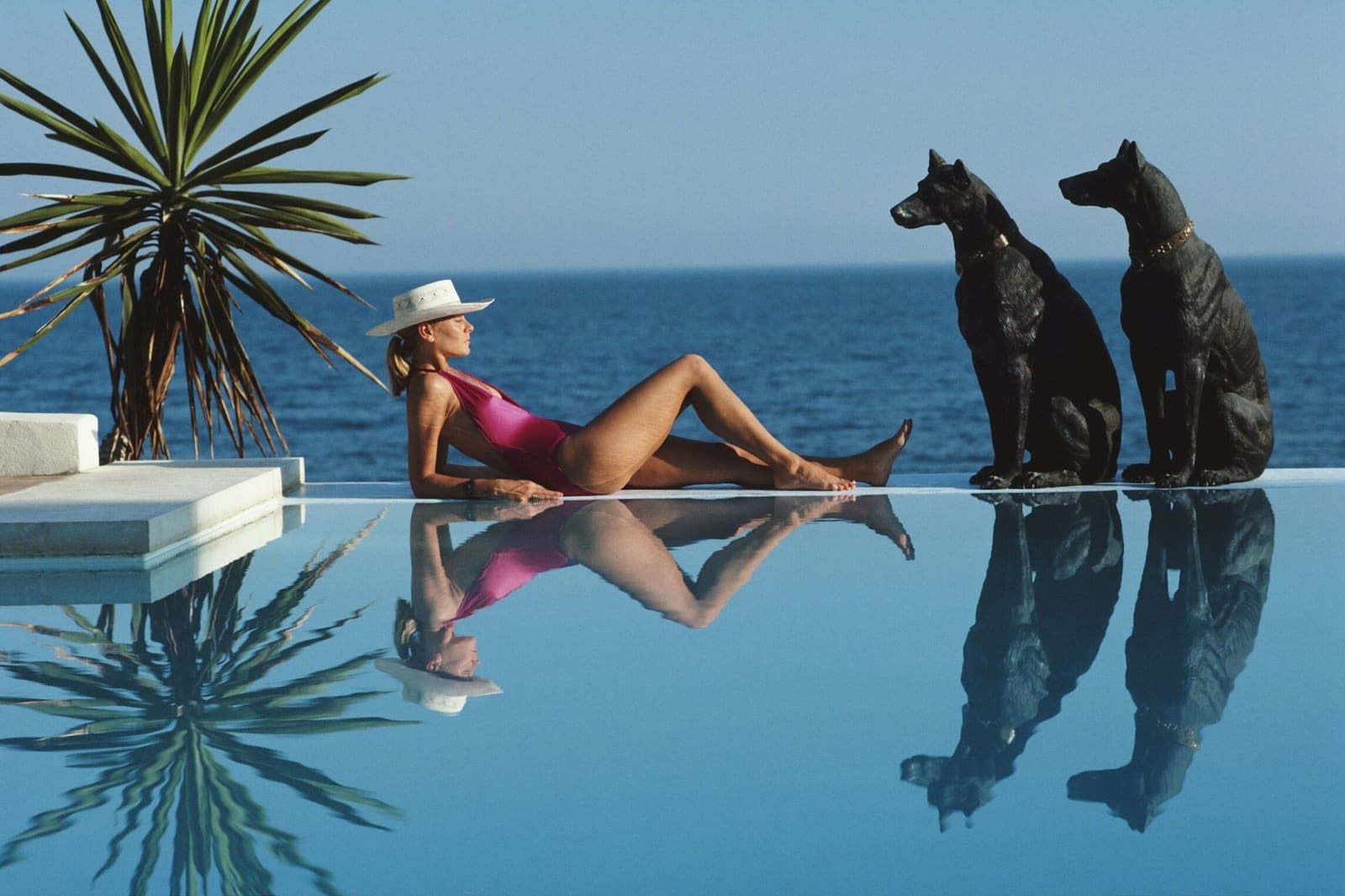Few photographers have so indelibly defined a visual era as Slim Aarons. Working primarily from the 1950s through the 1980s, Aarons became synonymous with glamorous depictions of leisure—swimming pools, ski slopes, summer lawns, and Mediterranean villas populated by the affluent and the beautiful.
His stated aim was simple: to photograph “attractive people doing attractive things in attractive places.” Yet his style was anything but simplistic. Through colour, composition, and an instinct for social theatre, Aarons developed a photographic language that was both celebratory and curiously detached, documenting a world of privilege with elegance and precision.
Colour and sunlight
Aarons’s style is instantly recognisable for its luminous use of natural light and saturated colour. Shooting largely in Kodachrome, he embraced the vivid hues of blue swimming pools, manicured greens, and sunlit skin. His photographs often convey an atmosphere of endless summer, even when set in alpine resorts. Unlike fashion photographers who dramatised with shadow and artifice, Aarons sought clarity: bright, open compositions that emphasised warmth and abundance. His style is often described as “sun-drenched,” a quality that made leisure itself appear as a form of radiance.
Composition as theatre
Aarons was less concerned with formal portraiture than with staging scenes of lifestyle. His images are frequently arranged as tableaux: figures casually distributed around a pool, at a cocktail party, or on a yacht. The composition invites the eye to wander, discovering details that suggest a story—the tilt of a sunhat, the placement of a champagne flute, the geometry of a diving board.
This theatrical approach reflected Aarons’s background as a wartime photojournalist. He once noted that after documenting conflict, he chose to turn his lens on beauty. Yet the photojournalist’s instinct for narrative never left him; each frame offers not just people but the suggestion of a social script.
Distance and intimacy
Part of Aarons’s enduring appeal lies in his balance of intimacy and detachment. He was deeply embedded in the world he photographed—friends with socialites, aristocrats, and Hollywood stars—yet his images rarely feel voyeuristic. Instead, he maintained a respectful distance, allowing scenes to unfold naturally. Viewers are invited into the setting without feeling they have intruded. This balance creates the sense of privilege: to see what is normally hidden, yet presented with dignity rather than scandal.
Lifestyle as iconography
Aarons’s oeuvre is less about individual identity than about lifestyle as an aesthetic category. His sitters are rarely identified by name; what matters is their role within a tableau of leisure.
The turquoise pool, the villa terrace, the ski lodge—all become recurring motifs, forming a visual iconography of privilege. In this way, Aarons helped to shape the cultural imagination of post-war affluence, offering images that were aspirational but not unattainable, infused with charm rather than excess.
Legacy
Today, Slim Aarons’s photographs are celebrated not only as glamorous records of a jet-set world but also as cultural artefacts. They reveal how leisure itself became a subject worthy of art, and how photography could frame privilege as both documentary and dream.
His style—sunlit, elegant, and quietly theatrical—remains a touchstone for lifestyle photography, capturing the allure of a world where beauty seemed both effortless and eternal.














Leave a Reply